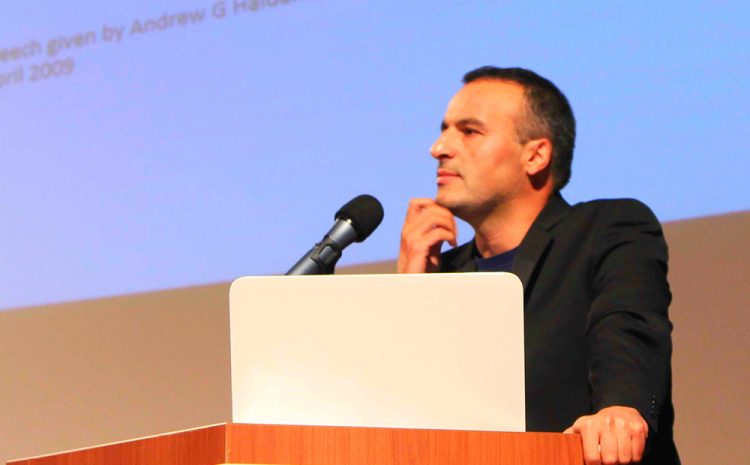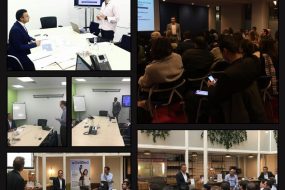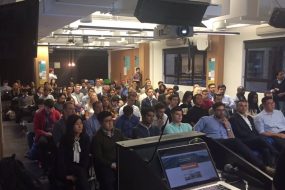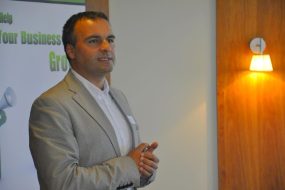
From Human Intelligence to AI: The Era Where Only the Exceptional Succeed
Farhad Reyazat – PhD in Risk Management
Citation: Reyazat, F. (2025, September 20). From Human Intelligence to AI: The era where only the exceptional succeed. https://www.reyazat.com/2025/09/20/from-human-intelligence-to-ai-the-era-where-only-the-exceptional-succeed/
Intelligence: Humanity’s Defining Edge
Roughly six million years ago, our lineage branched away from chimpanzees and bonobos. For most of that vast span, our ancestors were not apex predators but vulnerable foragers. Lacking claws, speed, or sharp senses, early humans survived primarily by scavenging what stronger animals left behind. Physically, we were unremarkable slow, easily fatigued, poor at camouflage, and with weaker vision and hearing than many creatures around us.
Then, about 300,000 years ago, something extraordinary began to shape the fate of Homo sapiens. Our brains grew to an average of 1,300–1,500 cubic centimeters. (Miller, Barton, and Nunn,2019) Though the organ accounts for just 2% of body mass, it consumes nearly 20–25% of the body’s resting energy, a costly evolutionary bet. That investment paid off. Humans discovered problem-solving, coordination, and strategy. We invented teamwork: some acted as lookouts, others gave chase, and still others hurled stones. Weak in muscle, we became strong in mind—capable even of bringing down mammoths.
It was not physical change but intelligence alone that propelled humans to the top of the food chain, displacing or even driving to extinction far more powerful but less intelligent rivals. This was not artificial; it was natural intelligence, honed by evolution. Our species’ supremacy over the living world is built on this singular capacity.
The human brain is not a static library of knowledge but a dynamic processor. It recalls, reorganizes, and applies information fluidly according to the problems we face. Intelligence is selective attention: deciding what data matters and how to recombine it to create something new. Our sensory inputs may be limited compared with other species, but our cognitive processing transforms that scarcity into better decisions. In essence, intelligence turns raw data into movement, speech, silence—into action.
There are two kinds of data on which intelligence feeds: the flowing data of our immediate senses, and the stored data of memory and accumulated knowledge. (Tripathy, S. P., & Öǧmen,2018; Zlotnik, G., & Vansintjan, 2019). Across history, more than 117 billion people have lived, and though only about 8 billion are alive today, the experiences of the 109 billion who came before us remain embedded in artifacts, language, and culture. Now, through digitization, much of that collective knowledge has been captured and made accessible, connecting the past directly to our modern processors. (Population Reference Bureau, 2023).
All of human supremacy, all of civilization, rests on this one faculty: intelligence. And as we look forward, the central question is whether the next stage of evolution belongs to artificial intelligence. This force could complement, amplify, or perhaps one day challenge the very human intelligence that brought us here.
Will AI complement human intelligence, or replace it?
Artificial Intelligence (AI) has reignited one of the oldest questions about technology: does it primarily complement human capabilities, or does it ultimately replace them? The answer matters not only for workers and firms but for the trajectory of economies and societies.
The Evidence So Far
Exposure is already very high. The International Monetary Fund (IMF) estimates that about 40% of jobs worldwide are substantially exposed to AI, rising to 60% in advanced economies. Of these, roughly half may see productivity gains through complementarity, while the other half face substitution pressures that could reduce labor demand (Mauro Cazzaniga et al, 2024; Cerutti, E., et al., 2025).
Clerical and routine cognitive work is most at risk. According to the International Labour Organization (ILO), generative AI is unlikely to wipe out most jobs outright. Instead, it’s the heaviest pressure falls on clerical occupations—where tasks are standardized and easily codified. In most other fields, AI automates tasks, not whole jobs (ILO, 2023; Gmyrek et al, 2025).
Higher-skill jobs are highly exposed—but to augmentation, not full automation. Research by Eloundou et al. (2023) found that 80% of U.S. workers have at least 10% of their tasks affected by AI, with exposure rising with wage level. Crucially, for professionals and knowledge workers, AI tends to serve as a decision-support tool: drafting, analysis, scenario planning functions that amplify rather than displace.
Real-world trials confirm complementarity. A large call-center experiment with a GPT-based assistant showed that productivity rose 14% overall, but by 34% for novices. Experienced workers saw little change, demonstrating that AI acts most powerfully as a complement for those with less expertise (NBER/QJE, 2023).
The net job effect is unresolved. The OECD’s 2023 report underscores that AI triggers three offsetting forces: displacement of some roles, productivity boosts within others, and the creation of entirely new tasks and industries. Whether economies end up with net job loss or gain will depend on the speed of adoption, complementary skill investments, and policy safeguards surrounding the diffusion of new technologies, worker protections, and equitable access to these technologies.
Complement or Replacement? Perspectives from Thinkers and Scholars
The debate over whether AI will complement or replace human intelligence is both empirical and intellectual. Recent studies highlight the dual dynamics: clerical and routine cognitive tasks face intense pressure for automation, while higher-skill professions are more likely to experience augmentation. This duality resonates with a broad spectrum of scholarly and popular works, which together sketch possible futures.
Kai-Fu Lee (2021), AI 2041
Lee envisions near-term AI as narrow, practical, and domain-specific—applied in logistics, healthcare, finance, and education. The sharpest disruptions fall on routine clerical roles, while professionals and creatives who learn to “co-pilot” with AI will thrive. For Lee, the central story is replacement at the bottom, complementarity at the top.
Mustafa Suleyman (2023), The Coming Wave
Suleyman stresses speed and scale. AI and other technologies, such as synthetic biology, are advancing too rapidly for traditional containment. Because AI is cheap, scalable, and profit-driven, markets naturally tilt toward substitution. Unless society builds new guardrails through governance, regulation, and equitable access, AI risks concentrating power while displacing workers.
Max Tegmark (2017), Life 3.0
Tegmark broadens the frame to long-term futures. He outlines possibilities from benign human–AI co-evolution to dystopian replacement by superintelligence. In the near term, AI may complement human creativity and decision-making. In the long term, outcomes hinge on alignment of values and incentives: without careful steering, complementarity could give way to replacement.
Brian Christian (2020), The Alignment Problem
Christian brings the debate down to technical and ethical challenges. Even today’s AI systems mis-optimize, inherit biases, and misgeneralize. This means that even when intended as complements, AI can erode job quality or displace workers. Genuine complementarity requires solving the alignment problem—ensuring that systems reflect fairness, human purpose, and social values.
Kevin Kelly (2016), The Inevitable
Kelly offers a contrasting optimism. He sees AI not as a rival but as a pervasive complement—comparable to electricity in its ubiquity. Rather than one superintelligence, he imagines “a billion AIs” specializing in narrow tasks. His example of centaur chess—where human–AI teams outperform both humans and machines alone illustrates his conviction that humans plus AI will always be stronger than either alone.
Daron Acemoglu & Simon Johnson (2023), Power and Progress
By contrast, Acemoglu and Johnson warn against assuming technology automatically benefits all. Historically, from the medieval plow to the Industrial Revolution, elites captured gains first, and only later did prosperity spread through regulation and redistribution. With its high fixed costs and winner-takes-all dynamics, AI could amplify inequality unless deliberately redirected to empower workers and communities.
Synthesis
Together, these perspectives underscore that the complement vs. replacement question is not technologically predetermined.
- Near term: AI is most likely to complement higher-skill and creative work (Lee, Kelly), while replacing repetitive clerical tasks.
- Medium term: Market forces may drive substitution unless societies intervene with governance and guardrails (Suleyman, Acemoglu & Johnson).
- Long term: Futures diverge dramatically from symbiosis to displacement—depending on alignment and social choices (Tegmark, Christian).
The balance between complementarity and replacement is therefore not fixed. It will be shaped by the way humans adopt, regulate, and align AI—not by algorithms alone.
Patterns Emerging
- Replacement risk concentrates at the lower end of the skills spectrum, especially in clerical and routine cognitive tasks. This is analogous to earlier technological shifts: steam engines replaced muscle, electricity displaced mechanical energy, and automation supplanted typists.
- Complementarity dominates at higher levels. Professionals, decision-makers, and creative workers are more likely to see AI as an augmentation—enhancing analysis, decision-support, and problem-solving capacity.
- Distributional outcomes hinge on institutions. As Acemoglu and Johnson emphasize, without active policy, the benefits of complementarity may accrue mainly to firms and elites. With careful design, AI could diffuse widely and become a tool for broad-based empowerment, echoing Kelly’s vision of ubiquitous “cognification.”
The unsettled question—will AI complement human intelligence or replace it? is unlikely to resolve into a single answer. The data reveal a dual reality: replacement at the routine level and complementarity at the professional level. The historical analogy suggests both optimism and caution. Like past general-purpose technologies, AI can liberate human potential or entrench inequality. Which path dominates depends less on the algorithms themselves and more on human choices, policy frameworks, investment in skills, and a vision of technology as a servant of shared prosperity rather than a substitute for it.
The End of “Average” Entrepreneurship
While much of the debate has focused on whether AI complements or replaces human labor, an equally profound transformation is unfolding in the domain of entrepreneurship. Evidence now suggests that AI is effectively ending the era of the “average” founder by commoditizing the three advantages that once defined early-stage success: the average entrepreneur, the average implementation, and the average idea (Harvard Business Review, 2024).
The Core Shift
AI collapses the cost and time of research, coding, design, content creation, operations, and go-to-market execution. What once differentiated a merely competent founder or team is now a prompt away. Activities that previously consumed quarters can be delivered in days. Yet the resources that matter most data, distribution, compute power, and integration depth are increasingly concentrated in the hands of incumbents and platform companies. Startups can still win, but not by being “average.”
1. The “Average Entrepreneur” Advantage Is Gone
Founders once competed on hustle, generalist skills, and the ability to stitch together lean stacks of tools. Today, these baseline competencies —coding, copywriting, user experience, analytics, and sales outreach —are often AI-assisted or automated. If a founder operates only at this level, their output can be replicated instantly by thousands of others. As HBR’s AI-startups analysis shows, larger companies now control the data and compute needed to power the best models; the advantage naturally tilts up-market. To differentiate, entrepreneurs must now demonstrate non-average assets: proprietary data, privileged distribution, or novel system integrations.
2. “Average Implementation” Is a Commodity
The standard playbook—landing pages, large language model wrappers, paid ads—has become template-driven. AI toolchains make “good enough” execution cheap, fast, and ubiquitous. As General Catalyst’s Hemant Taneja observes, the challenge is not layering chatbots on existing workflows, but re-engineering processes end-to-end to create genuine value (Washington Post Live, 2024). Implementation quality, once a moat, is now table stakes.
3. “Average Idea” Gets Copied Instantly
Ideation itself is no longer scarce. AI can synthesize business opportunities, draft specifications, and generate creative concepts on demand. Ideas that rely on novelty signaling, “ nobody has thought of this,” may not survive a week. As a result, moats are shifting from novelty to outcome certainty: provable ROI, compliance readiness, verified accuracy, switching costs, and community network effects.
What Replaces “Average” as the Winning Formula
To survive the end of the average, founders must cultivate stacked, compounding moats:
- Proprietary data loops: securing exclusive rights to data from devices, enterprises, or regulated processes and learning uniquely from it.
- AI-native workflow depth: building entire job-to-be-done flows—intake → orchestration → verification → audit → billing—that create switching costs thin wrappers cannot.
- Distribution > product: embedding within ecosystems, incumbents, or mandatory enterprise systems where placement trumps feature parity.
- Verified outcomes and compliance: providing measurable guarantees (SLAs, audits, error bounds) in sectors where incumbents move slowly.
- Model and compute strategy: treating foundation models as a utility, with cost-disciplined strategies across open/closed and large/small deployments.
- Community and data-network effects: converting users into co-producers of labeled data, workflows, or playbooks, creating self-reinforcing advantages.
Practical Test: Are You Still “Average”?
Founders can score themselves across six criteria: exclusive data rights, workflow depth, embedded distribution, regulatory fit, outcome guarantees, and proven unit economics. Ventures falling below the threshold are at risk of being commoditized.
Final Word
Artificial Intelligence marks the end of the “average” era in entrepreneurship. By turning baseline skill, execution, and ideation into near-free commodities, it raises the bar to data-rich, deeply integrated, verifiably valuable models. The winners of tomorrow will resemble infrastructure-grade operators with compounding moats, not feature startups.
This marks the final extension of the complement vs. replacement debate. Just as AI replaces average labor but complements excellence, so too it replaces average entrepreneurship while amplifying the exceptional. Mediocrity is no longer enough; in the AI era, only those who move beyond “average” will endure.
References
Miller, I. F., Barton, R. A., & Nunn, C. L. (2019). Quantitative uniqueness of human brain evolution revealed through phylogenetic comparative analysis. eLife, 8, Article e41250. https://doi.org/10.7554/eLife.41250
Tripathy, S. P., & Öǧmen, H. (2018). Sensory memory is allocated exclusively to the current event-segment. Frontiers in Psychology, 9, Article 1435. https://doi.org/10.3389/fpsyg.2018.01435
Zlotnik, G., & Vansintjan, A. (2019). Memory: An extended definition. Frontiers in Psychology, 10, Article 2912. https://doi.org/10.3389/fpsyg.2019.02912
Population Reference Bureau / Our World in Data. (2023). How many people have ever lived on Earth? Our World in Data. https://ourworldindata.org/population-growth
Mauro Cazzaniga, Florence Jaumotte, Longji Li, Giovanni Melina, Augustus J Panton, Carlo Pizzinelli, Emma J Rockall, and Marina Mendes Tavares. “Gen-AI: Artificial Intelligence and the Future of Work”, Staff Discussion Notes 2024, 001 (2024), accessed September 20, 2025, https://doi.org/10.5089/9798400262548.006
Cerutti, E., et al. (2025). The Global Impact of AI: Mind the Gap (IMF Working Paper No. WP/25/76). International Monetary Fund. https://www.imf.org/-/media/Files/Publications/WP/2025/English/wpiea2025076-print-pdf.ashx
Gmyrek, P., Berg, J., & Bescond, D. (2023). Generative AI and jobs: A global analysis of potential effects on job quantity and quality (ILO Working Paper No. 96). International Labour Organization. https://doi.org/10.54394/FHEM8239
Gmyrek, P., Berg, J., Kamiński, K., Konopczyński, F., Ładna, A., Nafradi, B., Rosłaniec, K., & Troszyński, M. (2025). Generative AI and jobs: A refined global index of occupational exposure (ILO Working Paper No. 140). International Labour Organization. https://doi.org/10.54394/HETP0387
Eloundou, T., Manning, S., Mishkin, P., & Rock, D. (2023). GPTs are GPTs: An Early Look at the Labor Market Impact Potential of Large Language Models. arXiv. https://doi.org/10.48550/arXiv.2303.10130
Brynjolfsson, E., Li, D., & Raymond, L. R. (2023). Generative AI at Work (NBER Working Paper No. 31161). National Bureau of Economic Research. https://doi.org/10.3386/w31161
Organisation for Economic Co-operation and Development. (2023). OECD Employment Outlook 2023: Artificial Intelligence and the Labour Market. OECD Publishing. https://doi.org/10.1787/08785bba-en
Lee, K.-F., & Chen, Q. (2021). AI 2041: Ten visions for our future. Currency.
Suleyman, M., & Bhaskar, M. (2023). The coming wave: Technology, power, and the twenty-first century’s greatest dilemma. Crown
Tegmark, M. (2017). Life 3.0: Being human in the age of artificial intelligence. Alfred A. Knopf.
Christian, B. (2020). The alignment problem: Machine learning and human values. W. W. Norton & Company.
Kelly, K. (2016). The inevitable: Understanding the 12 technological forces that will shape our future. Viking.
Acemoglu, D., & Johnson, S. (2023). Power and progress: Our thousand-year struggle over technology and prosperity. PublicAffairs.
Harvard Business Publishing Education. (2024). https://www.hbsp.harvard.edu/product/H08G26-PDF-ENG






One reply on “From Human Intelligence to AI: The Era Where Only the Exceptional Succeed”
The Real Person!
Author Alex acts as a real person and passed all tests against spambots. Anti-Spam by CleanTalk.
This is cool